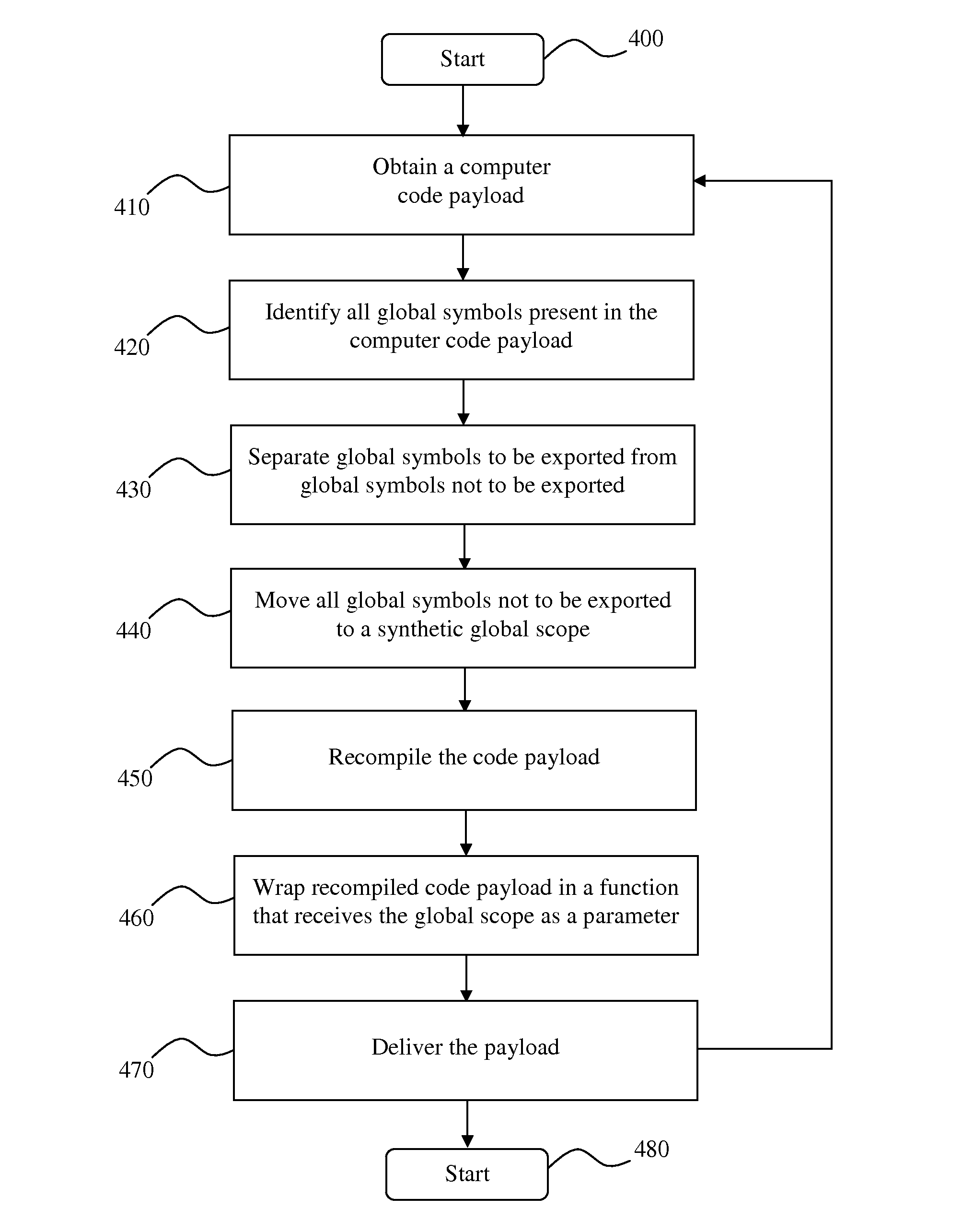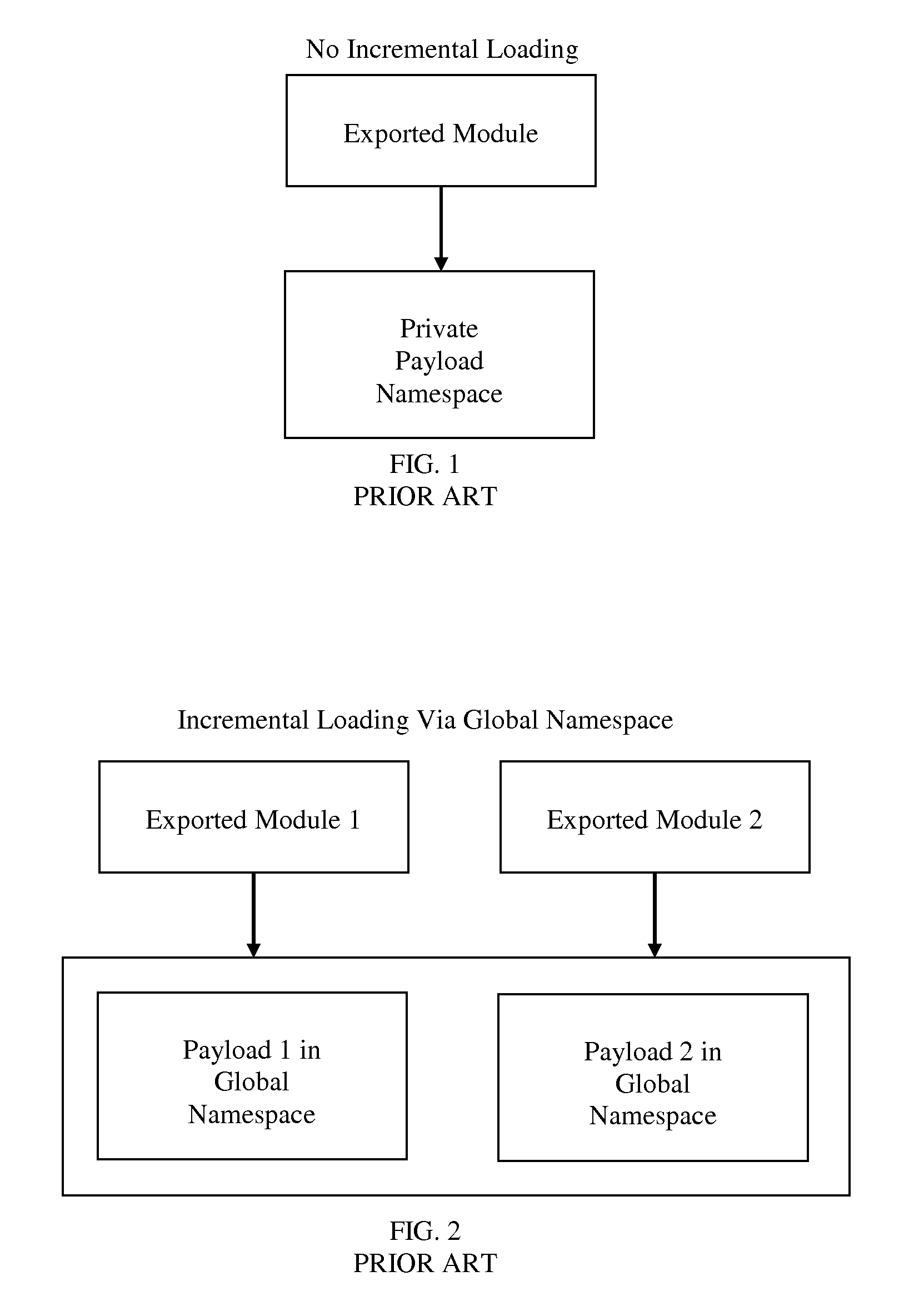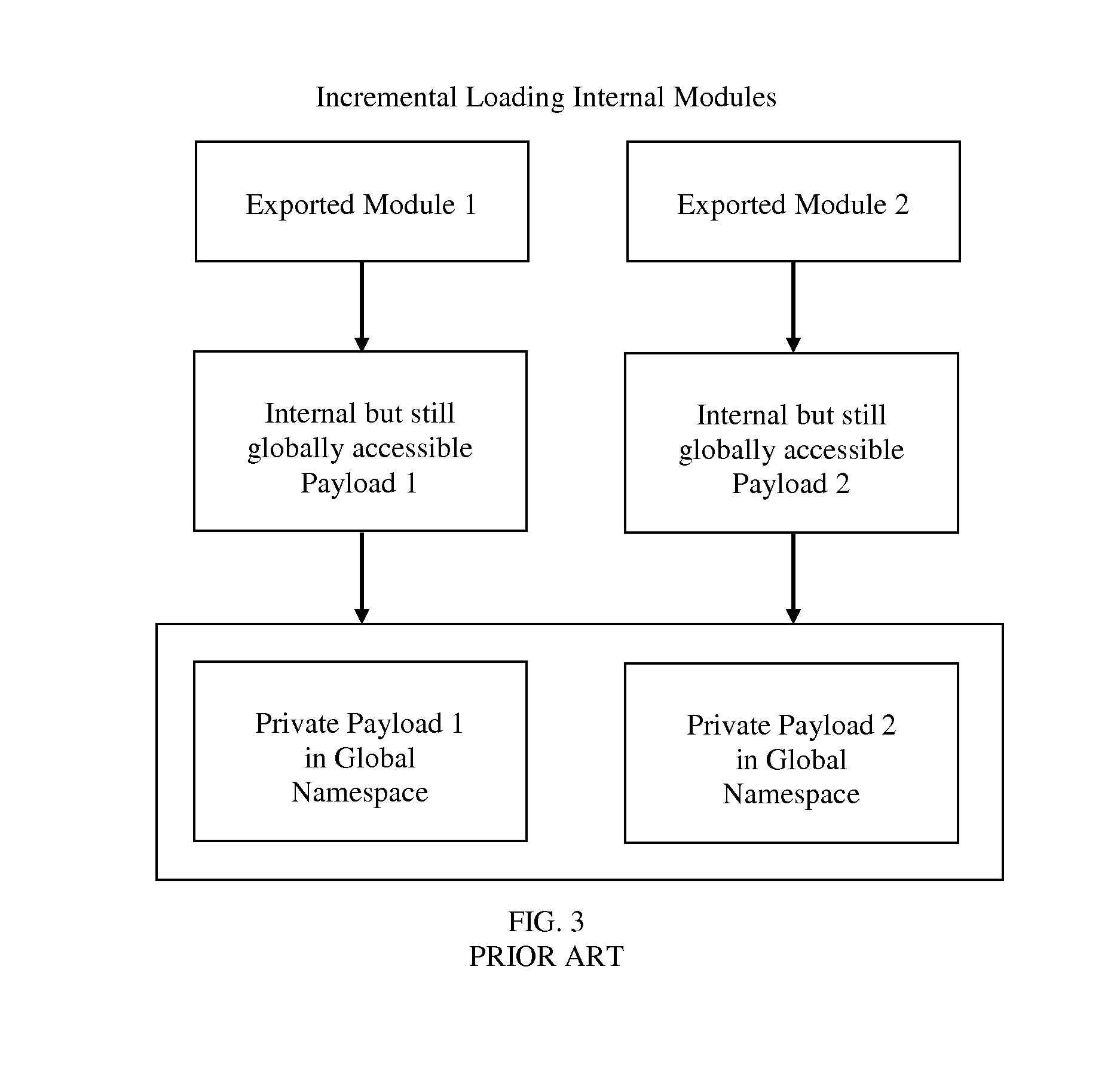Computer code transformations to create synthetic global scopes
a technology of global scope and computer code, applied in the direction of program control, interprogram communication, multi-programming arrangements, etc., can solve the problems of difficult-to-debug errors, other unexpected problems, and increased risk of namespace collision, so as to reduce global namespace pollution, facilitate incremental loading of modules, and prevent namespace collisions
- Summary
- Abstract
- Description
- Claims
- Application Information
AI Technical Summary
Benefits of technology
Problems solved by technology
Method used
Image
Examples
Embodiment Construction
[0023]Referring now to the drawings, wherein like reference numerals refer to like parts throughout, there is seen in FIGS. 1-3 configurations of loading, incrementally and all at once, code payloads according to various methods previously known in the art. In FIG. 1 an application programming interface (‘API”) is exported and delivers a payload that is contained within a private namespace. In this configuration, all objects in the program payload will be initialized at one time when the API is exported, but is done within a private network such that the payload will not become publically accessible.
[0024]In the configuration of FIG. 2, two APIs are exported at different times (such as when they are needed), thereby delaying the initialization of the objects in the accompanying payloads that each reside in the global namespace. However, in this configuration (as compared to the one show in FIG. 1), the payloads are publically accessible on the third party computers that have request...
PUM
 Login to View More
Login to View More Abstract
Description
Claims
Application Information
 Login to View More
Login to View More - R&D
- Intellectual Property
- Life Sciences
- Materials
- Tech Scout
- Unparalleled Data Quality
- Higher Quality Content
- 60% Fewer Hallucinations
Browse by: Latest US Patents, China's latest patents, Technical Efficacy Thesaurus, Application Domain, Technology Topic, Popular Technical Reports.
© 2025 PatSnap. All rights reserved.Legal|Privacy policy|Modern Slavery Act Transparency Statement|Sitemap|About US| Contact US: help@patsnap.com



